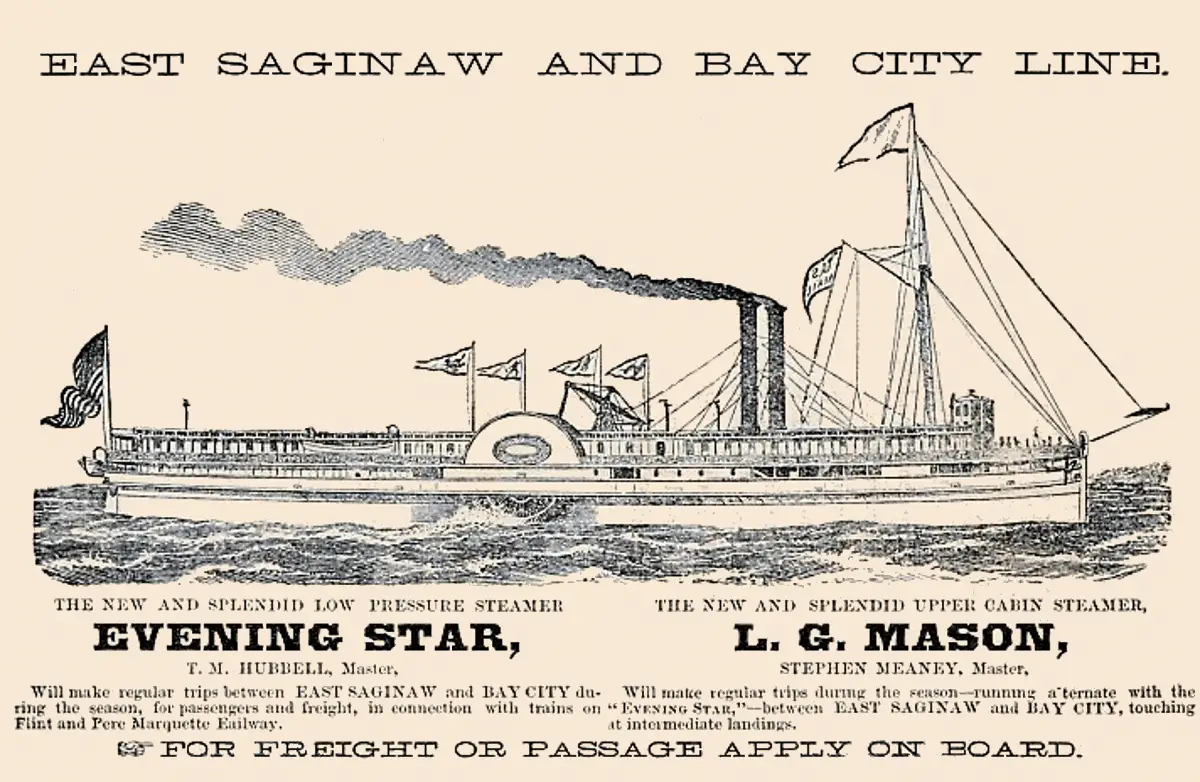While conducting other research, I ran across this advertisement for a side wheeler steamboats line running a route between Saginaw and Bay City. While information is scant, it does offer a little nugget of traveling by riverboat in Mid Michigan in the 1870s.
We almost take it for granted that we can hop in a car and travel a hundred miles to go to a special place for a lunch date. In the 1870s, a hundred-mile trip anywhere was considered a significant life event. People tended to live and die near where they were born. It must have been a fantastic experience to board a steamship or train and travel at an incredible 15-35 miles an hour when your ordinary course of travel is to walk or on horseback.
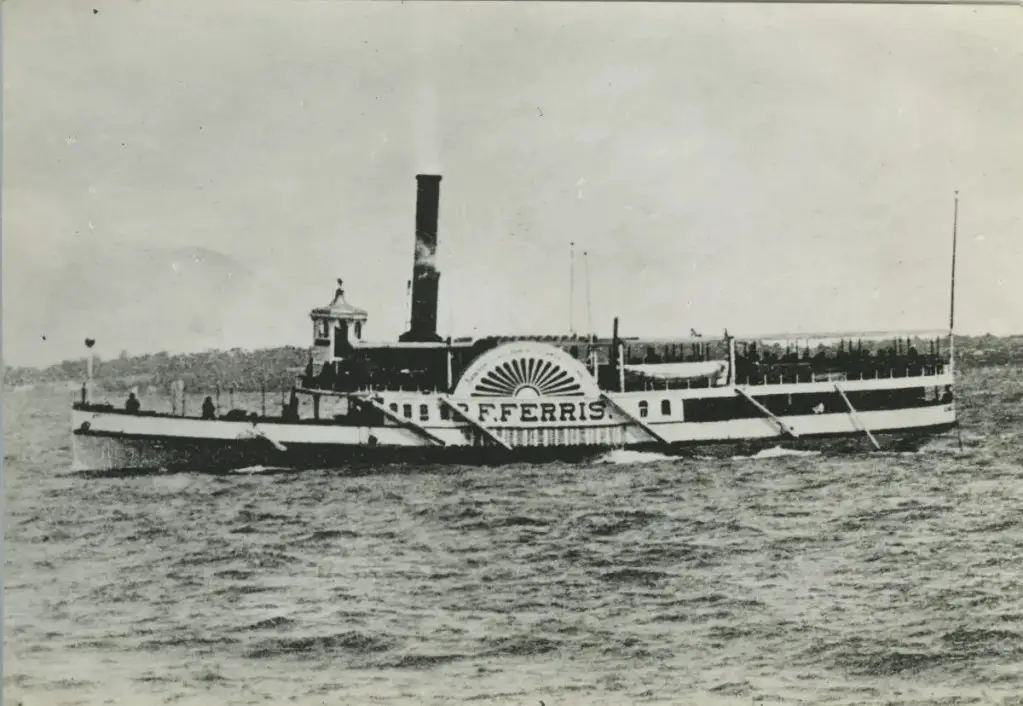
The East Saginaw and Bay City’s line of side-wheeler steamers consisted of the Daniel Ball captained by Robert Medler, the L. G. Mason, captained by William Monroe, and the Evening Star captained by T.M. Hubbell. The route was back and forth between East Saginaw and Bay City six times each Tuesday and Friday. The schedule to depart East Saginaw was at 6:45, 9:00, and 11:00 am, then at 1:00, 3:00, and 5:15 pm. Two ships plied this route each sailing day so a passenger could leave during these same times. The travel time was about 2 hours: the fare, 25 cents.
Disaster stuck this line on October 17, 1876, when the Daniel Ball caught fire as it approached Bay City. All the passengers and crew escaped.
The Star Line

The side-wheeler steamboat, the Evening Star did service with the Idlewild on the Star Line operating between Detroit, Port Huron, and Port Austin. The owner of the Star Line, A.N. Moffat started a “river war” on this route made for one of the most interesting tales of completion among steamship captains on the Great Lakes.
The Importance of Side-Wheeler Steamboats to Michigan
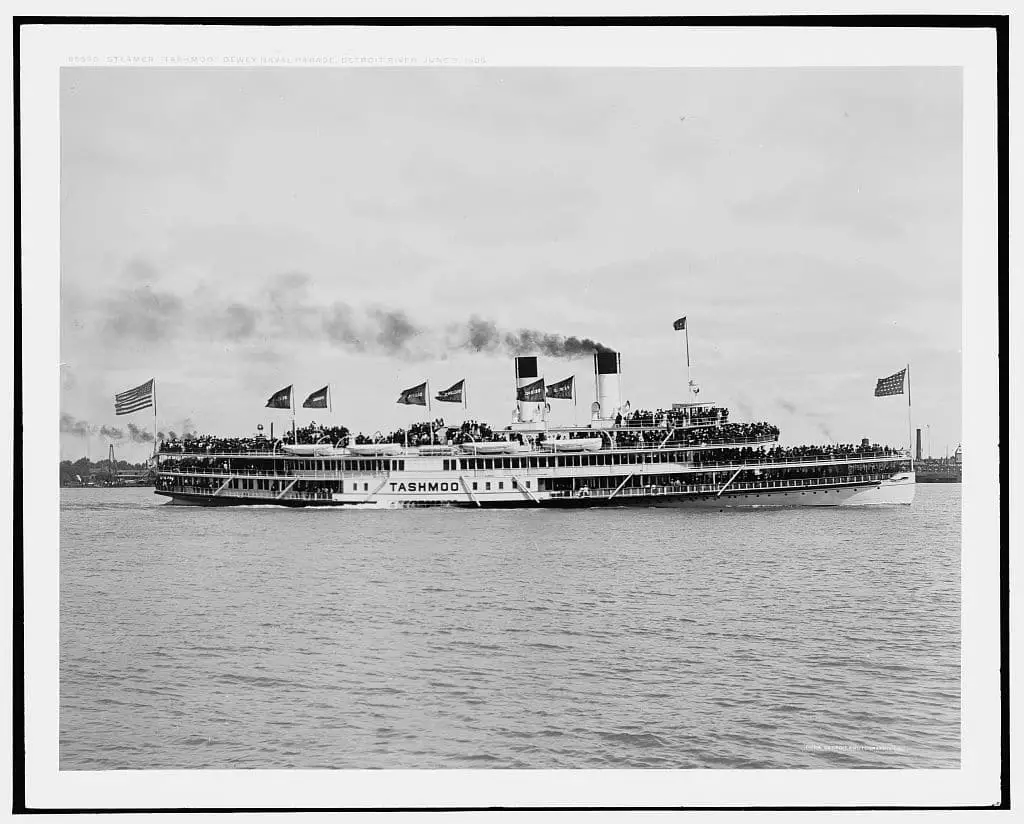
Side-wheeler steamboats, with their large paddle wheels mounted on either side of the vessel, played a significant role in Michigan’s history, particularly during the 19th century. These steamboats revolutionized transportation, trade, and communication across the Great Lakes, including Lake Michigan, Lake Huron, and Lake Erie. Their impact on the state was multifaceted, influencing economic development, settlement patterns, and the cultural landscape.
Catalysts for Economic Growth
- Trade and Commerce: Steamboats and paddle wheelers were instrumental in Michigan’s economic expansion. They transported goods such as lumber, coal, agricultural products, and manufactured goods between Michigan ports and other states. The ease of shipping enabled industries to thrive and expand their reach.
- Lumber Industry: Michigan’s vast forests made it a hub for the lumber industry, and steamboats played a crucial role in moving timber to markets. This contributed to Michigan becoming a leading lumber producer in the 19th century.
- Tourism and Passenger Transport: Wheeler paddle boats also transported people, connecting urban centers like Detroit with smaller towns. Wealthy travelers from cities like Chicago and Cleveland were drawn to Michigan’s resort towns, fostering the state’s early tourism industry. Later ships like the City of Cleveland III would bring high levels of technology to the Great Lakes traveller.
Shaping Settlement Patterns
- Access to Remote Areas: The mobility offered by side-wheelers allowed settlers to reach remote areas of Michigan, encouraging the establishment of new towns and communities along the waterways.
- Urban Development: Ports such as Detroit, Saginaw, and Muskegon became bustling hubs due to the steady flow of goods and people facilitated by steamboats.
Technological and Maritime Advancements
- Engineering Feats: Side-wheeler steamboats were among the marvels of 19th-century engineering. Their ability to navigate shallow waters and their relatively fast speeds made them ideal for the Great Lakes.
- Ice Navigation: Many steamboats were adapted to handle Michigan’s icy winters, extending the shipping season and maintaining vital supply lines.
Communication and Connectivity
- Mail and News Transport: Steamboats facilitated faster delivery of mail and news, which helped Michigan communities stay connected with national and global developments.
- Cultural Exchange: The steamboat routes became conduits for cultural exchange, bringing diverse populations into contact and enriching Michigan’s cultural fabric.
Decline and Legacy
By the late 19th century, the importance of side-wheeler steamboats waned due to the advent of railroads, which offered faster and more reliable transportation. However, their legacy endures:
- Preservation Efforts: Museums and historical societies in Michigan often highlight the contributions of steamboats to the state’s development.
- Cultural Memory: Steamboats remain a symbol of Michigan’s maritime history, celebrated in local festivals and historical reenactments.
Paddle Wheels Types in the 1800s
Paddle wheels were essential for powering early steamboats, and different types were designed to meet specific needs. Each type had its own advantages and limitations, depending on where and how the boats were used.
Side Paddle Wheels
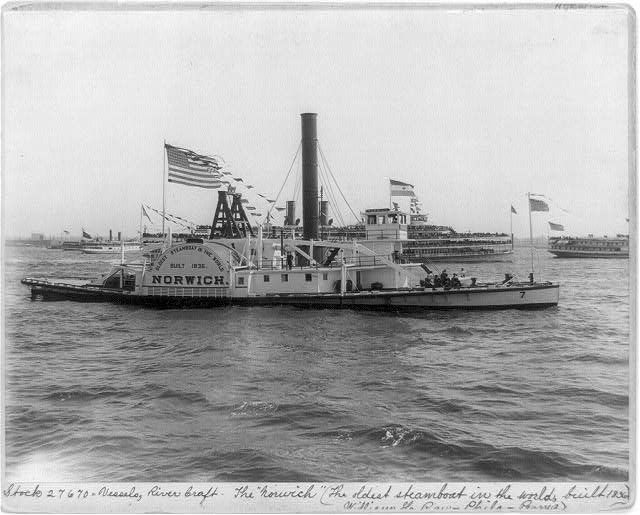
Side paddle wheels were mounted on each side of the boat. They worked together to push the boat forward by moving water backward. These wheels were good for wide rivers and lakes, offering balance and easy steering. However, they weren’t very effective in rough waters and could be damaged by waves or rocks.
Stern Paddle Wheels
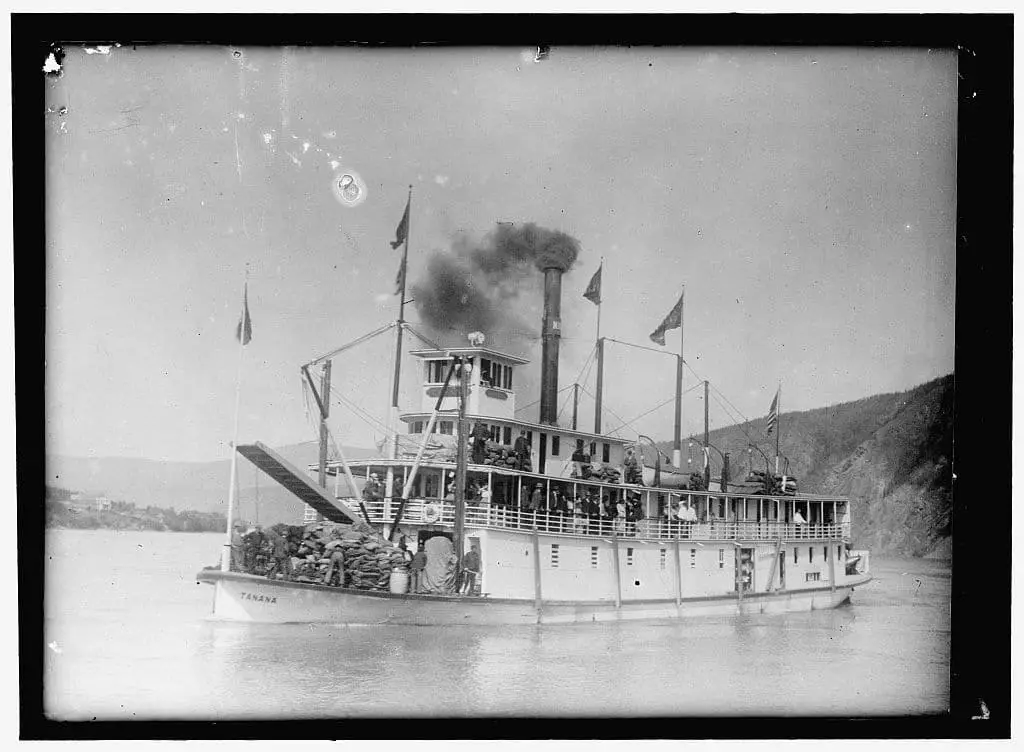
Stern paddle wheels were placed at the back of the boat. They were better for shallow rivers since they sat above the waterline. These wheels were simple and easy to fix, but they weren’t as fast or maneuverable as side wheels. They were popular in frontier areas where rivers were often shallow.
Feathering Paddle Wheels
Feathering wheels were more advanced. The paddles adjusted their angle as they moved through the water, which made them more efficient and faster. They also used less fuel and created less stress on the boat. However, this design was complex and expensive, so it was mostly used on boats where speed was important.
Bucket Paddle Wheels
Bucket paddle wheels had flat, rectangular paddles arranged around the wheel. They worked well in calm waters and were simple to build. However, they wore out quickly and weren’t as efficient as other designs. They were often used on cargo and utility boats.
Radial Paddle Wheels
Radial wheels were the simplest type. The paddles were fixed in place and didn’t adjust as the wheel turned. This made them easy to build but very inefficient. They were mostly used on early steamboats when designs were still basic.
Comparison of Paddle Wheel Types
| Type | Efficiency | Maneuverability | Best Use Case | Complexity |
|---|---|---|---|---|
| Side Paddle Wheels | Medium | High | Wide rivers/lakes | Medium |
| Stern Paddle Wheels | Low-Medium | Low-Medium | Shallow rivers | Low |
| Feathering Wheels | High | Medium | Long-distance, speed | High |
| Bucket Wheels | Medium | Medium | Utility and cargo | Low |
| Radial Wheels | Low | Low | Early/experimental use | Very Low |
Final Thought
Side-wheeler steamboats were pivotal in Michigan’s transformation during the 19th century. They not only facilitated economic growth and settlement but also connected the state with the broader Midwest and beyond. Their impact on Michigan’s history underscores the importance of maritime innovation in shaping the region’s identity and legacy. Today, they serve as a reminder of an era when the Great Lakes were a bustling artery of commerce and culture.
Related Reading For Side Wheeler Steamboats on Thumbwind

Jenny, Quanicassee’s Beer Drinking Bear – It was during this time of early motor travel that roadside attractions became popular. Small museums, oddity displays, and amusement parks popped up next to gas stations and restaurants. Vanderbilt started collecting wild animals for a roadside zoo. One of his early acquisitions was a female black bear.

Michigan Road Trip on M-25: Riding A Ribbon Around the Thumb – In this post, we cover two aspects of a great road trip along M-25. The first section covers all the roadside parks and scenic turnouts that surround the Thumb. The second part reviews a list of our favorite places to stop and check out along the way.

Marlette Railway Depot in 1900 – The railroad was key to the economic growth of the Thumb’s agricultural business. By 1910 Marlette Railway depot was twice a day stop for passengers and freight between Port Huron and Saginaw. During World War 1, the United States Railway Administration nationalized America’s railways during the war.
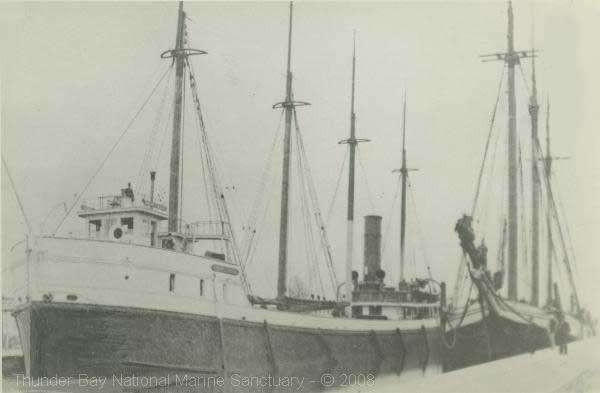
The Wreck of the Iron Chief – The Iron Chief was launched at the Detroit Dry Dock Company, in Wyandotte in July 1881. This wooden schooner was 212 feet long with a beam of a hefty 35-foot-wide In 1882 the schooner was converted from sail to steam in Detroit. It was a single stack vessel with fore and aft masts. A small forward pilothouse and aft cabins.

